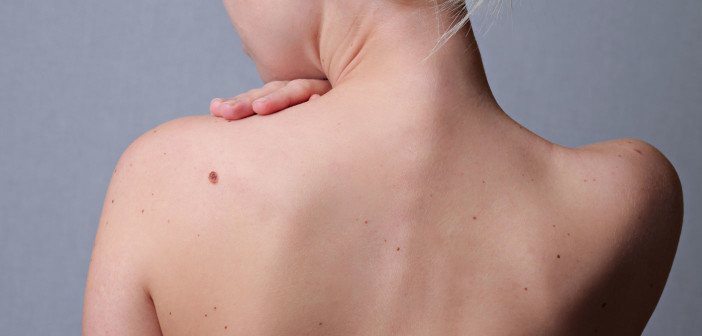When you think of someone having a mole on their face, you may envision a “beauty mark” like Marilyn Monroe’s or Cindy Crawford’s. Other people associate moles as a characteristic of witches or villains – raised and unsightly. In popular culture, heroes and heroines are usually associated with clear, smooth facial skin while villains are portrayed with facial moles, scars or blemishes. Regardless, moles are common and most of us have at least a few.
The medical term is nevus (plural is nevi). They are a collection of our pigment producing cells called melanocytes. An average adult has anywhere from 20-40 moles on their body. Those with lighter-colored skin usually have more. We typically start to get them during our childhood or adolescence and they can occur anywhere on the body including the scalp, under the nails, on your feet, and even the retina and lymph nodes! As we age, we acquire more moles and some that we have may even change over time. Some people have countless moles, which can be caused by a genetic trait. Hormonal changes and pregnancy may also increase the number of moles or change their appearance. They come in a variety of sizes, shapes, colors and textures. How a mole looks depends on the person, the type of mole, body location and other factors.
So, you may be thinking, “I’m very ‘moley’ and I have countless moles – does that mean anything?” First, you should differentiate between freckles and moles. Freckles are caused by exposure to sunlight and they represent damage to the skin. Ultraviolet light signals to the melanocyte (pigment producing cell) to make more melanin (pigment). Freckles appear mostly on the face and sun-exposed areas of the body, and they darken with re-exposure to the sun. Moles can be found all over the body – even in areas hidden from the sun. They can be atypical (bad), and melanoma (skin cancer) can develop from a mole or look like a mole. So, it is very important to pay attention to your moles, and also important to be responsible about sun exposure.
The signs of a mole to be concerned about include pain, itching, bleeding, changing and growing. In addition, the following “A,B,C,D,E” mnemonic will help you remember some of the danger signs of a mole that potentially indicates a melanoma:
Asymmetry: any mole that does not look symmetrical (evenly proportioned)
Borders: irregular borders – they should not look jagged or rough.
Color: multiple colors (brown, black, grey, tan) or multiple shades of one color
Diameter: anything larger than a pencil eraser (6mm)
Evolution: changes in size, shape, color, elevation, borders or symptoms
If you have a mole with any of the above traits, you should have it checked by a dermatologist; it may save your life.
A family history of melanoma is also another reason to have moles examined. Some may be atypical (unusual) or in medical terms, dysplastic. These moles are not totally benign, but have not yet become cancerous. Some people have more of these atypical moles than the general population (atypical mole syndrome). In general, the more moles a person has, the higher their risk of melanoma. Therefore, it is very important to be aware of your moles and if you have a question about any lesion, to see a dermatologist. Your dermatologist will reassure you if the lesion is benign and treat any suspicious lesions.
NOTE: This article is not intended to be a substitute for professional medical advice, diagnosis or treatment. Always seek the advice of your physician or other qualified health provider with any questions regarding a medical condition.
It is very important to be aware of your moles and if you have a concern, see a dermatologist.














